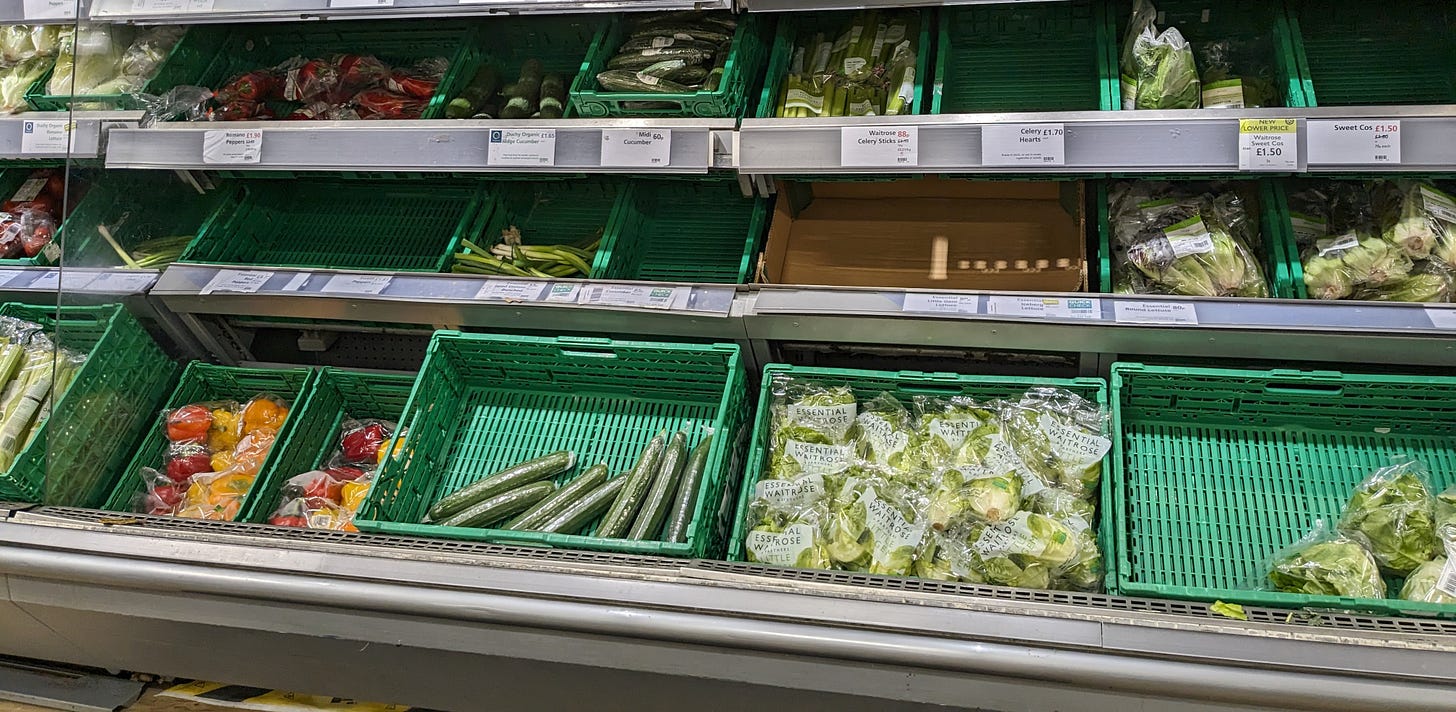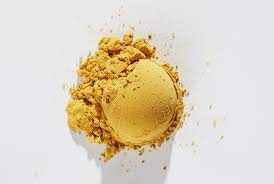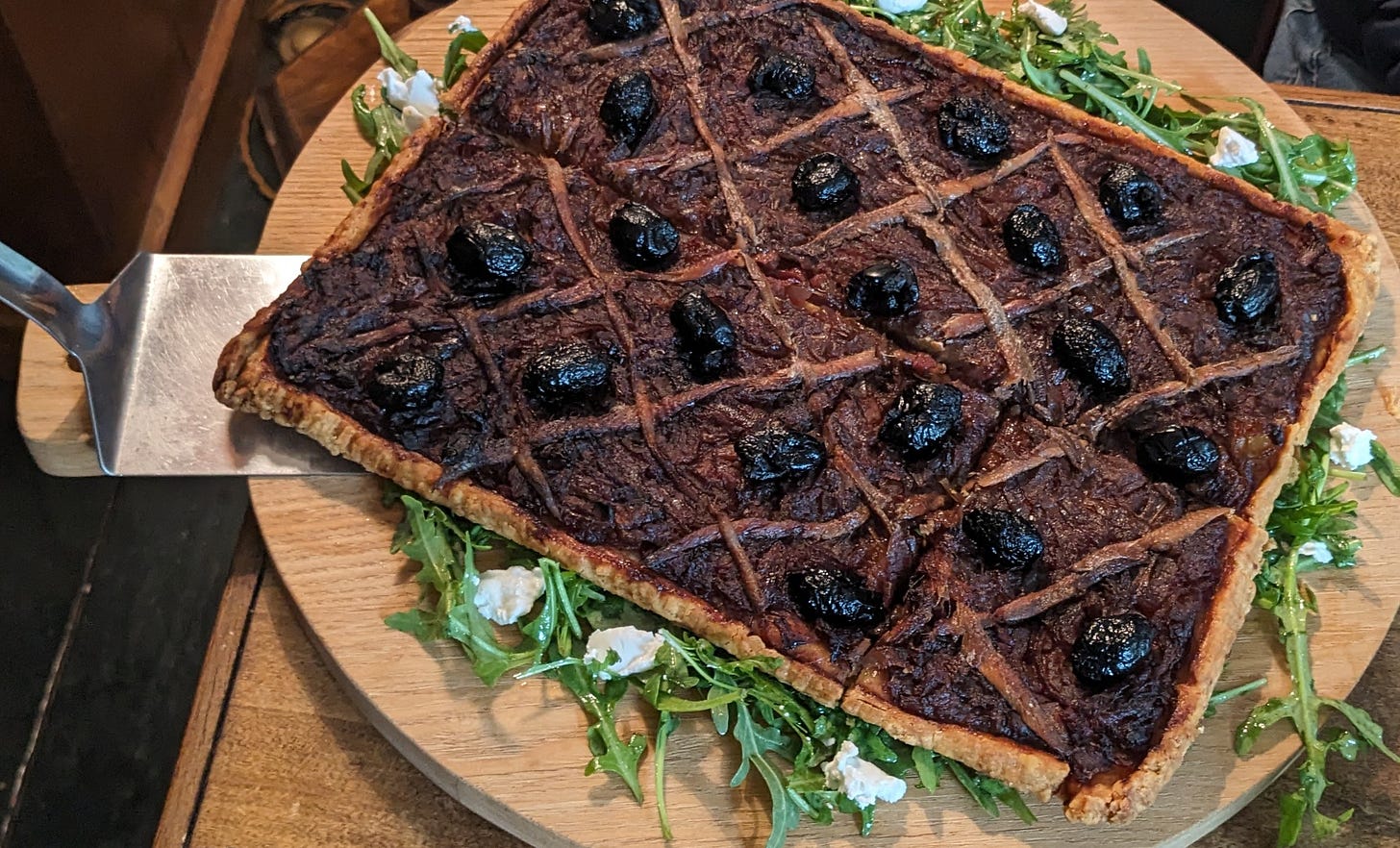Tootling into my local supermarket for a bit of a shop (my cabin bag is larger than my fridge), it seemed even emptier than it was three days ago. In the UK, that’s become the norm. And about to become emphatically more so as from next week, when importers will have to submit to even greater post-Brexit scrutiny with new border inspections and accompanying paperwork. From Tuesday, eggs, dairy and meat will require an inspection and a health certificate before they can enter the Britain. The government estimates these new border checks will cost businesses an extra £330 million/$423 million a year, a charge that will be passed on to consumers - and it’s facing a general election. Sounds mad to you? It’s called Take Back Control, the slogan of the Vote Leave campaigners.
It’s not only baffling political decisions that have got Britain into this not-pretty pass. It’s also the changing climate. Across the globe, this affects so many nations (that distancing synonym for Human Beings) whose surfeit or lack of water defines what crops will emerge to feed them. In the UK, severe autumn and winter rains have slashed harvest forecasts. Wheat, barley, oats and oil seed rape crops are predicted to fall by 4 million tons - 17.5 percent of production against last year. This means the cost of making bread, biscuits and other bakery, as well as beer, Britain’s national drink, will go up, with the consumer paying for the increase - on top of those increases already in place as a result of Covid, Brexit, and the war in Ukraine.
Excessive heavy rains across the USA have eroded soil and depleted soil nutrients. They have caused escalating agricultural runoff into streams, rivers, lakes and oceans, harming water quality. The rain continues across the UK, hampering the planting of the next round of crops, with some fields so waterlogged farmers don’t expect to plant them at all this season. Flooding in some coastal areas around the globe has already resulted in the complete loss of agricultural land.
In Canada, over 150 wildfires have continued to smoulder through the winter and are expected to break into renewed activity with the oncoming spring. Rising temperatures encourage pests and disease and shift their distribution. Insects are moving north from the tropics to regions previously found too cold. Where unexpected warmer weather patterns cause plants suddenly to bloom, pollinators such as bees and butterflies enthusiastically emerge weeks before usual - then are eradicated when temperatures slump back to their colder norms. All this affects what the world has available to eat.
Yet it’s AI and technological innovations which daily grab the news headlines. The state of the world’s diminishing food supply is so much less, in tabloid-speak, ‘sexy’. Nevertheless, its threat has generated a hotbed of ground-breaking innovation. Beavering away in their labs, scientists are coming up with some revolutionary solutions that go beyond meat-free alternatives to steak and burgers, to the problem of how to feed the world without contributing dramatically to climate change.
At the intelligible end, Curtin University in Perth, Australia, has been running a study in breeding cows to belch less and produce less flatulence by eliminating those genetically inheritable traits. At the you-gotta-be-kidding-me end, Solar Foods, a Finnish start-up, is creating a food out of electricity and air. No, not empty calories. Their invention is called Solein and is a powder not unlike a yeast. First, natural single-cell organisms are grown in a fermentation process. Next, renewable electricity is used to split water into hydrogen and oxygen. Then the cells are fed this hydrogen and CO2 magic plus minerals and nutrients, and - abracadabra! - food for all.
No, I don’t understand either. In any event, the Solein result is a protein to add to alt-meat, cheese, and milkshakes, and use as an egg replacement in noodles, pasta and mayonnaise. It adds, “a smooth, silky, full-bodied, rich mouthfeel” (umami to you, me, and the Japanese) as well as “complex, layered flavours”. It must do what it says on the lab sheet since Singapore has already granted Solein ‘novel food’ approval with chocolate bars and gelato containing it already being sold. Solar is looking to introduce its products to the US this autumn and to the EU by the end of 2025. (And to the UK, too, if only its regulator manages to slog through the backlog of other products looking for import approval.)
The nitty-gritty behind the invention is as complex as AI: Solein mimics soil-dwelling microbes (although its origins apparently lie “somewhere close to shore” in the Baltic Sea) that release the energy they require to live from oxidising hydrogen, as opposed to glucose that we humans depend upon.
Nope, I’m none the wiser either. So let’s move on to fish.
North of Hamburg in Germany, a bunch of people in lab coats are working on producing a fish. Their recipe involves a ruby-coloured growth medium rich in minerals, amino acids, sugars and proteins sloshing about in a 50-litre tank. This mixture will give fish cells such a boost they will swim forth and multiply profusely. After last week’s Tabled on the depletion of sea stocks, this can only be good news. The scientists involved say the - er, fish? the squish? can provide the same nutritional benefits of natural fish like omegas but without possible allergens, microplastics and other contamination associated with nature’s seafood. They aren’t expecting to present you with a Dover sole languishing across your plate in a beurre blanc sauce. Rather it’s fish balls and fish fingers that are on their menu.
Again, it’s Singapore that has risen to the bait, as it were, and is looking forward to eating alt-fish. Cultivated meat and chicken are already well accepted there, the country anxious to reduce its food imports, and aware that wild seafood is not sustainable.
So far, we’re not running out of onions (although when I lived in Moscow, they were unavailable from October to May). Here is a classic tart from Nice in the south of France to which you can, to be traditional, add a lattice of fillets of anchovy. Or leave them out if you hate them or are heeding fears over fish stocks.
You can buy ready-made pastry and why not. Except home-made is so much better, cheaper and not hard to make, honestly it isn’t.
Stew 1 kg/2lbs thinly sliced onions with 2 large skinned and chopped tomatoes in a good glug of olive oil over low heat, stirring regularly to prevent them catching, until they have softened and slumped, about 30-40 minutes. (Add a splash of water if they begin to burn.) When cool, spread over a rectangle of pastry to within 2cm/1 inch of its edge. Roll the edge inwards to create a little ridge. Split drained anchovy fillets from a can lengthways and lattice them over the smoothed out onion mix. In each diamond set a black pitted olive. Bake in a 200C/400F oven for 35-40 minutes until the pastry is crisp. I gave the pie in the photo 5 minutes too long because I was distracted by my enjoyment of my gin-and-tonic from a bottle of l’Ort. But I don’t think it mattered. Ask the guests.
170g/6oz butter cut into small pieces
285g/10 oz plain flour
Good pinch of salt
1 egg yolk beaten into 3 tablespoons of milk
Rub the butter into the flour until the mixture becomes like sand. Pour in the yolk and milk and stir it into the sand with a knife until it begins to come together. Abandon the knife and use your hands to create a ball of dough. Stick it in the fridge to develop, bringing it out 15 minutes before you want to roll it out to loosen up a bit. Roll it out on a floured surface to a rectangle about 3mm/⅛ in thick.








Actually the Philippines has had a massive onion shortage, and at points last year they cost as much as gold! (I exaggerate but not by much.)
So informative- as ever. But utterly depressing!